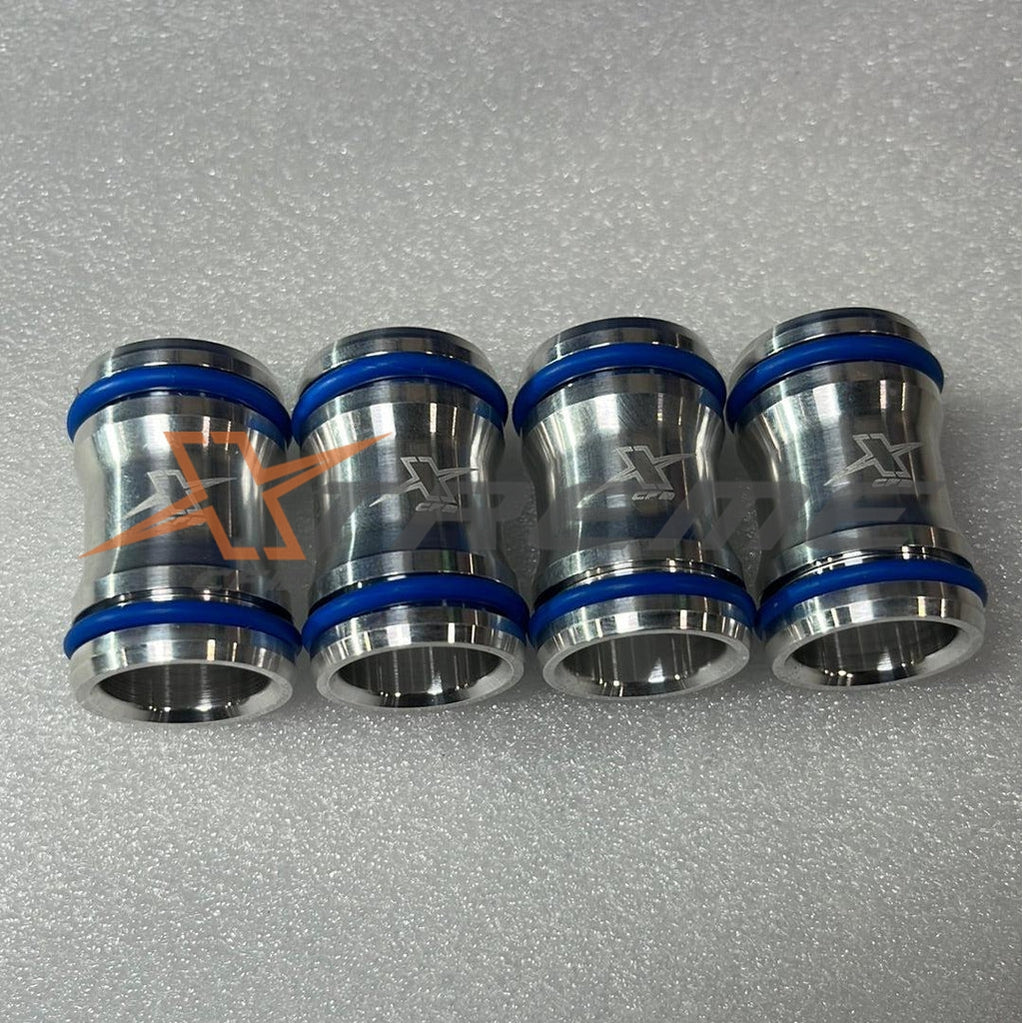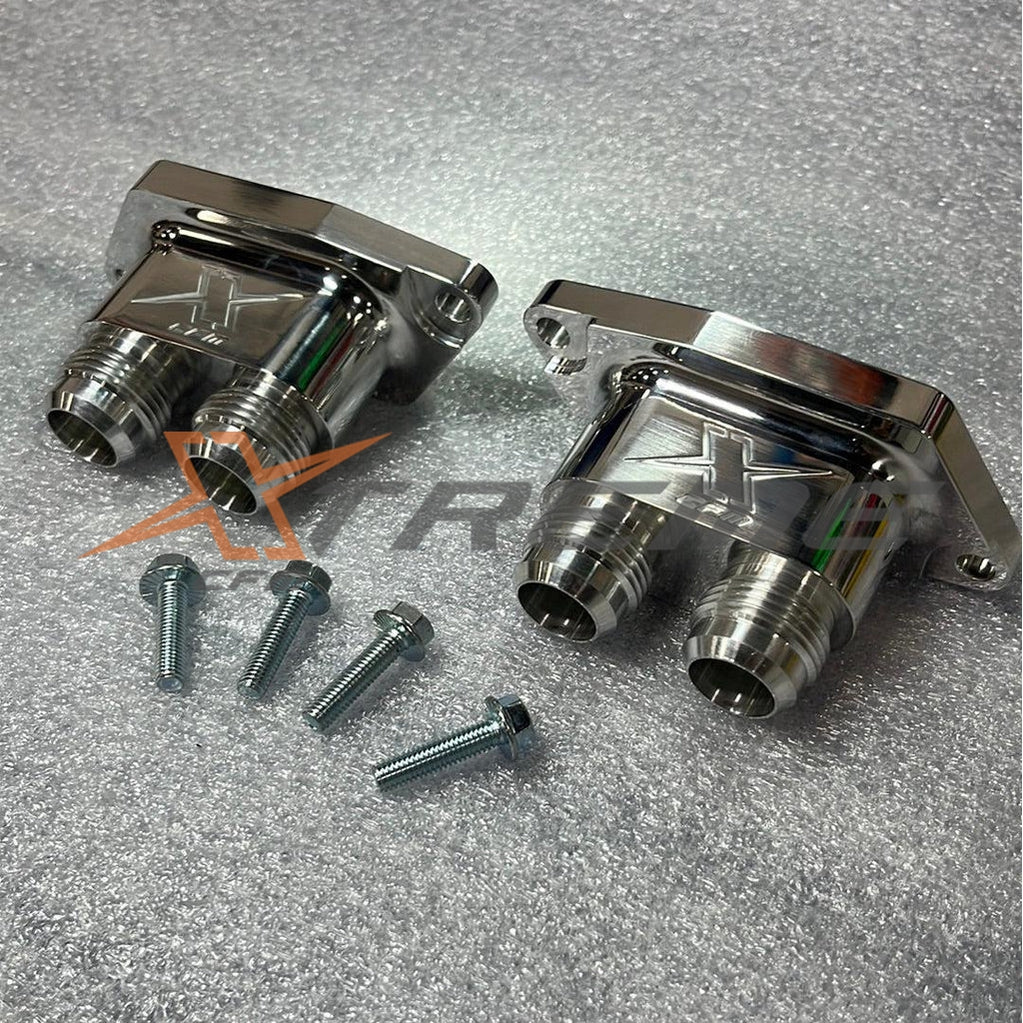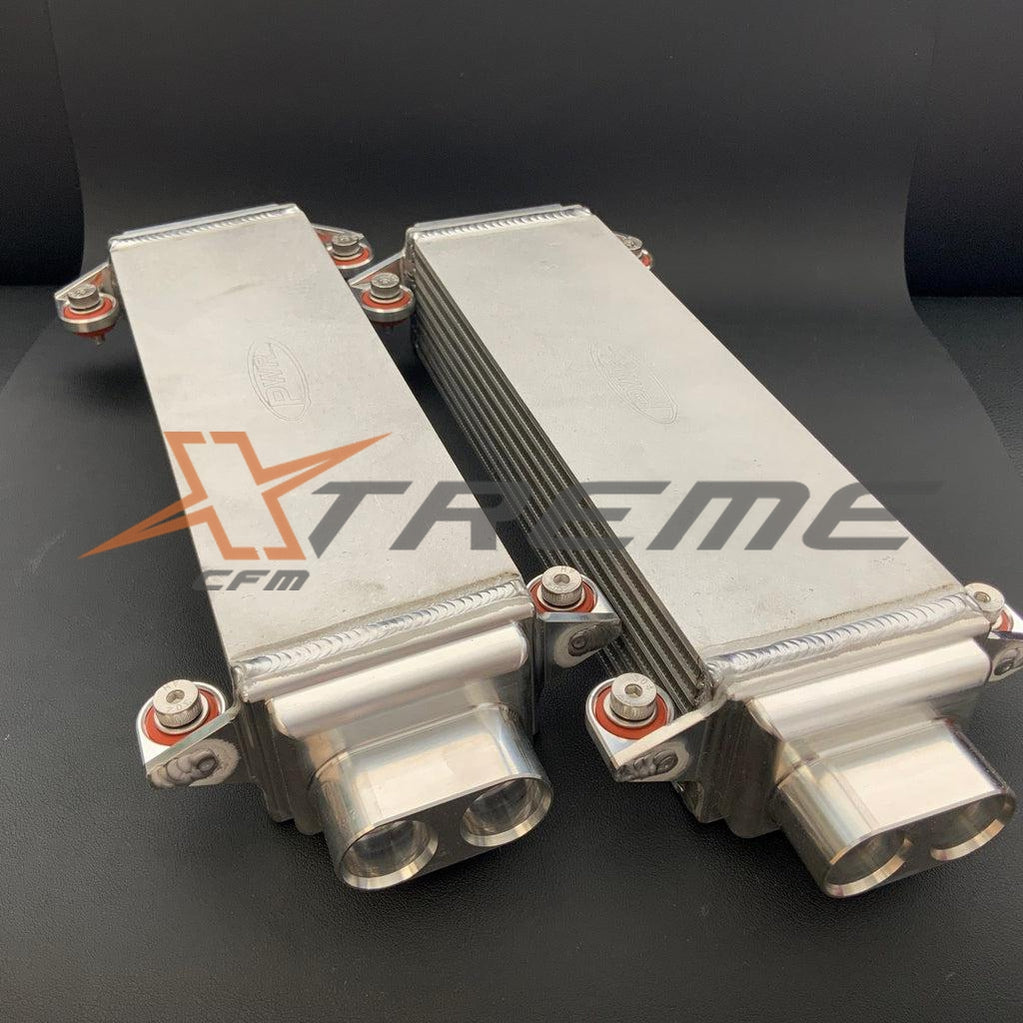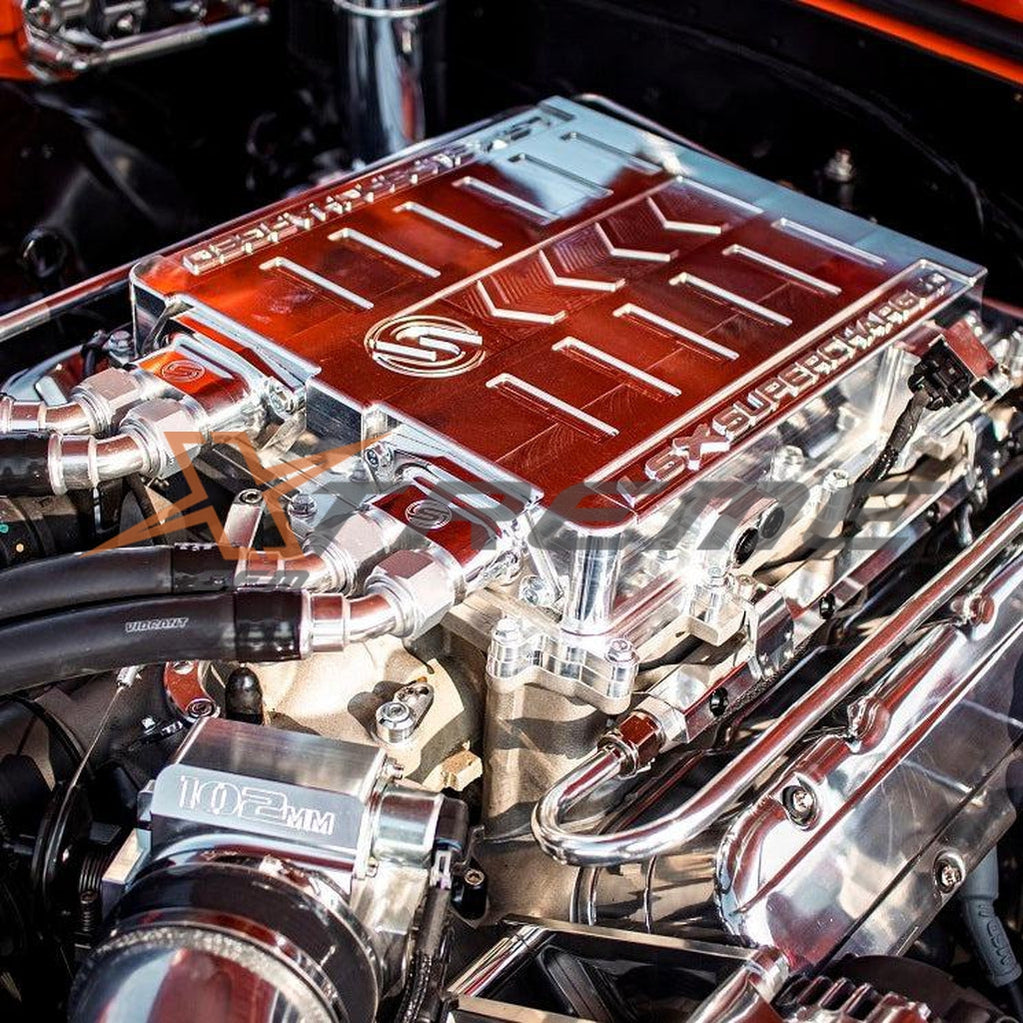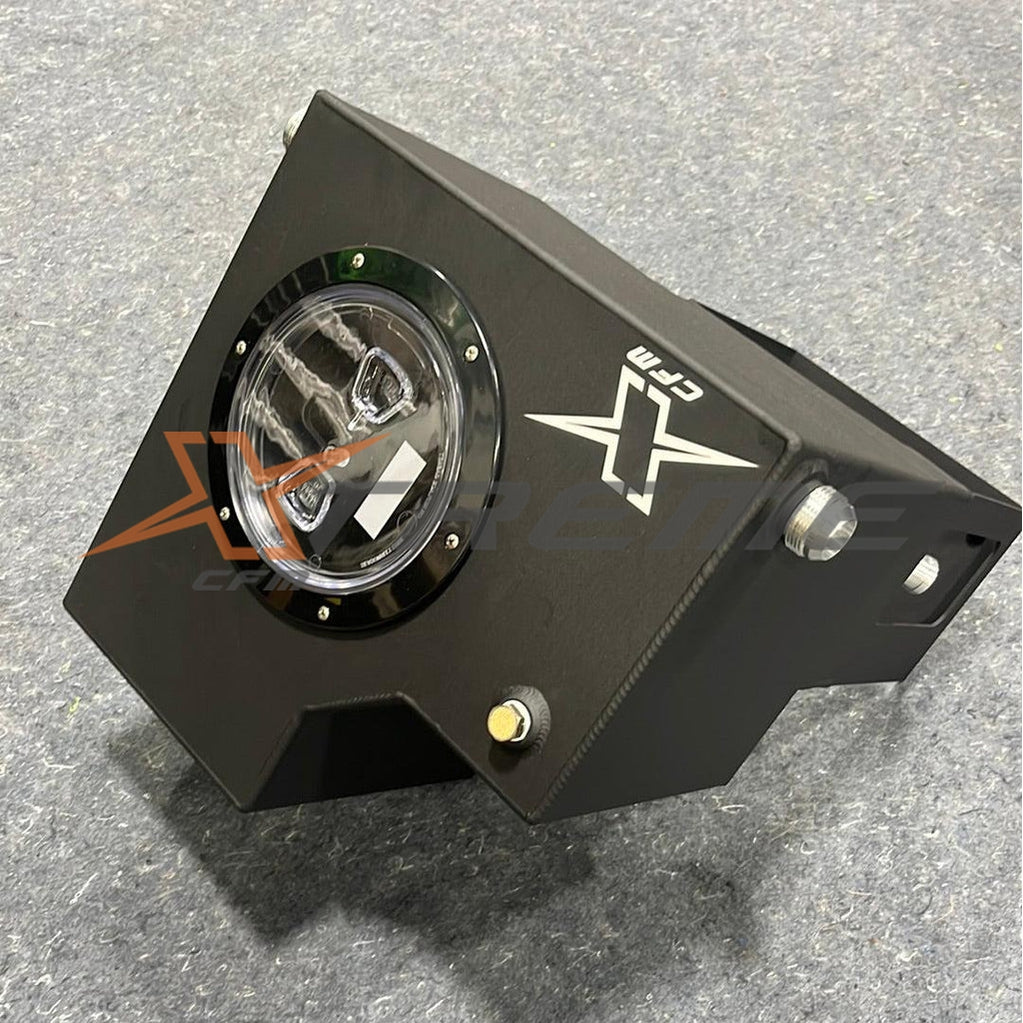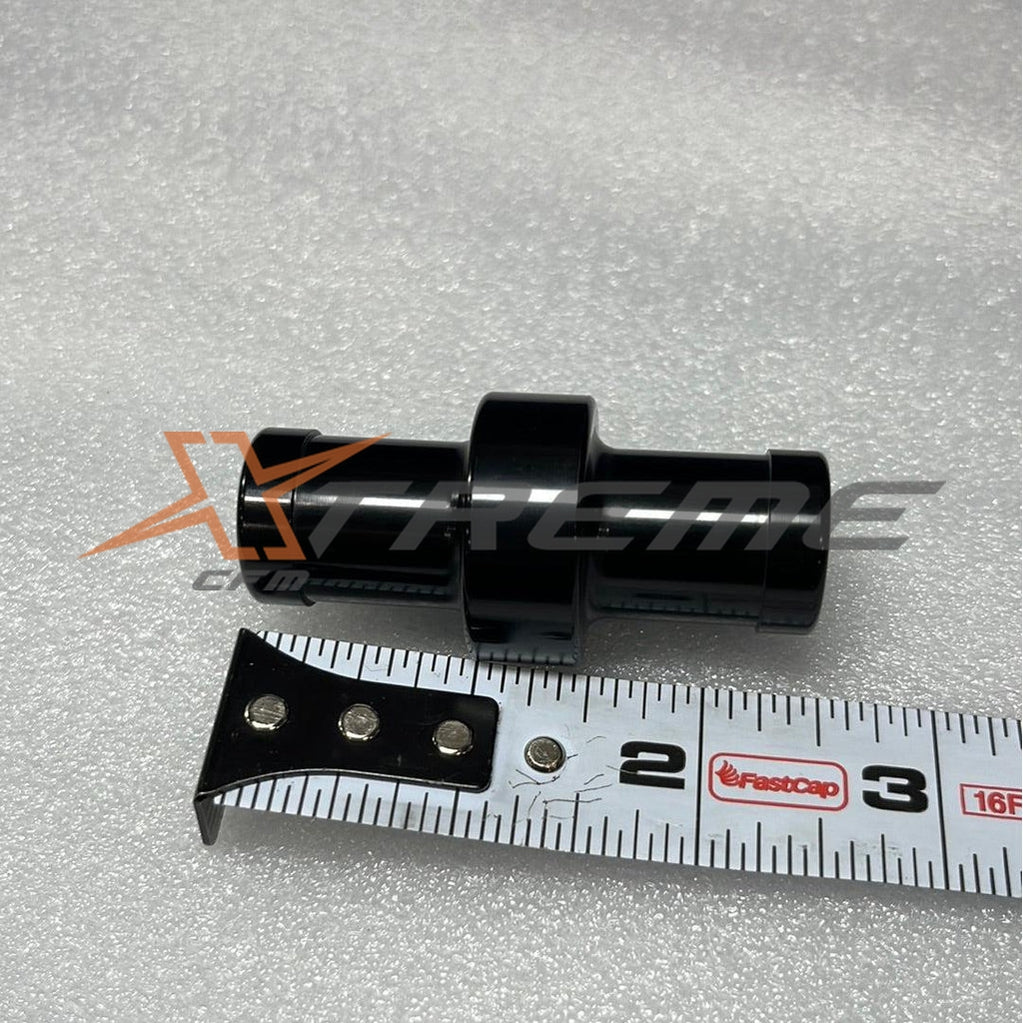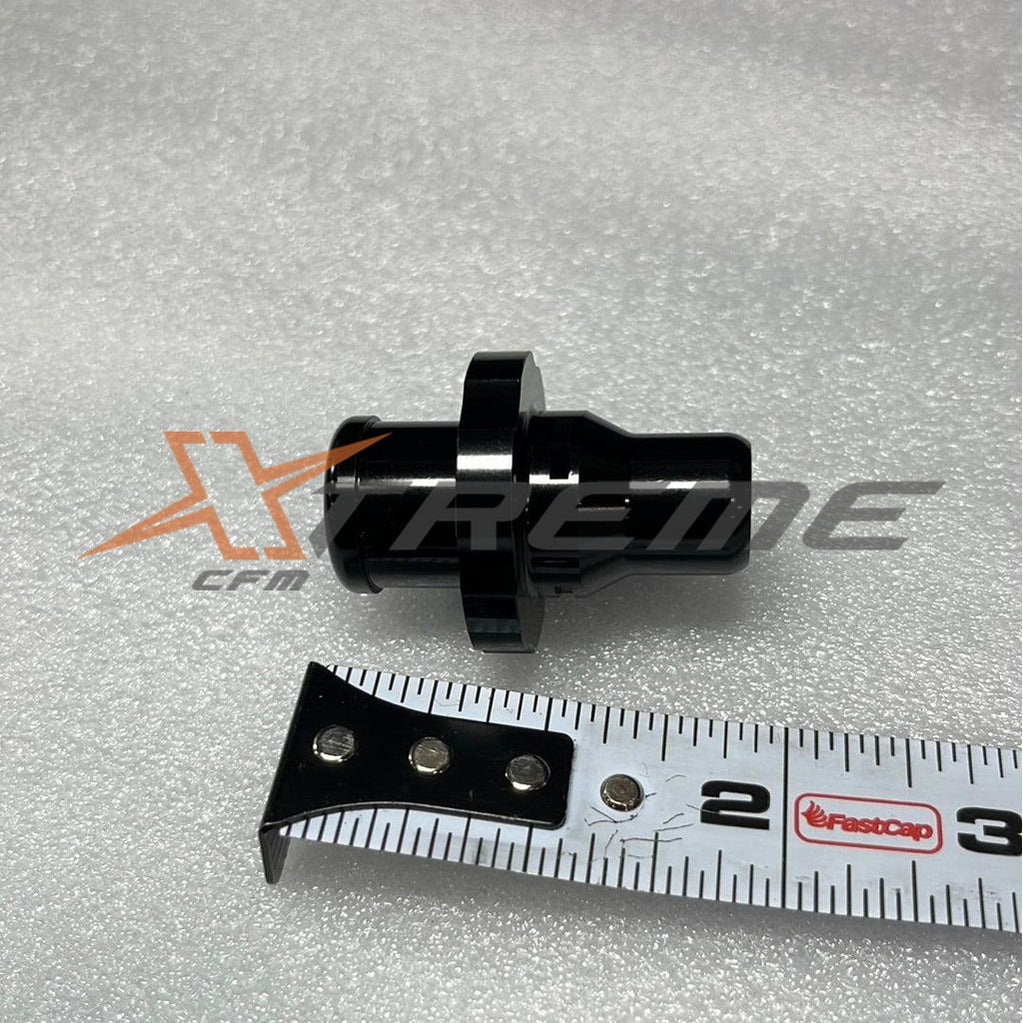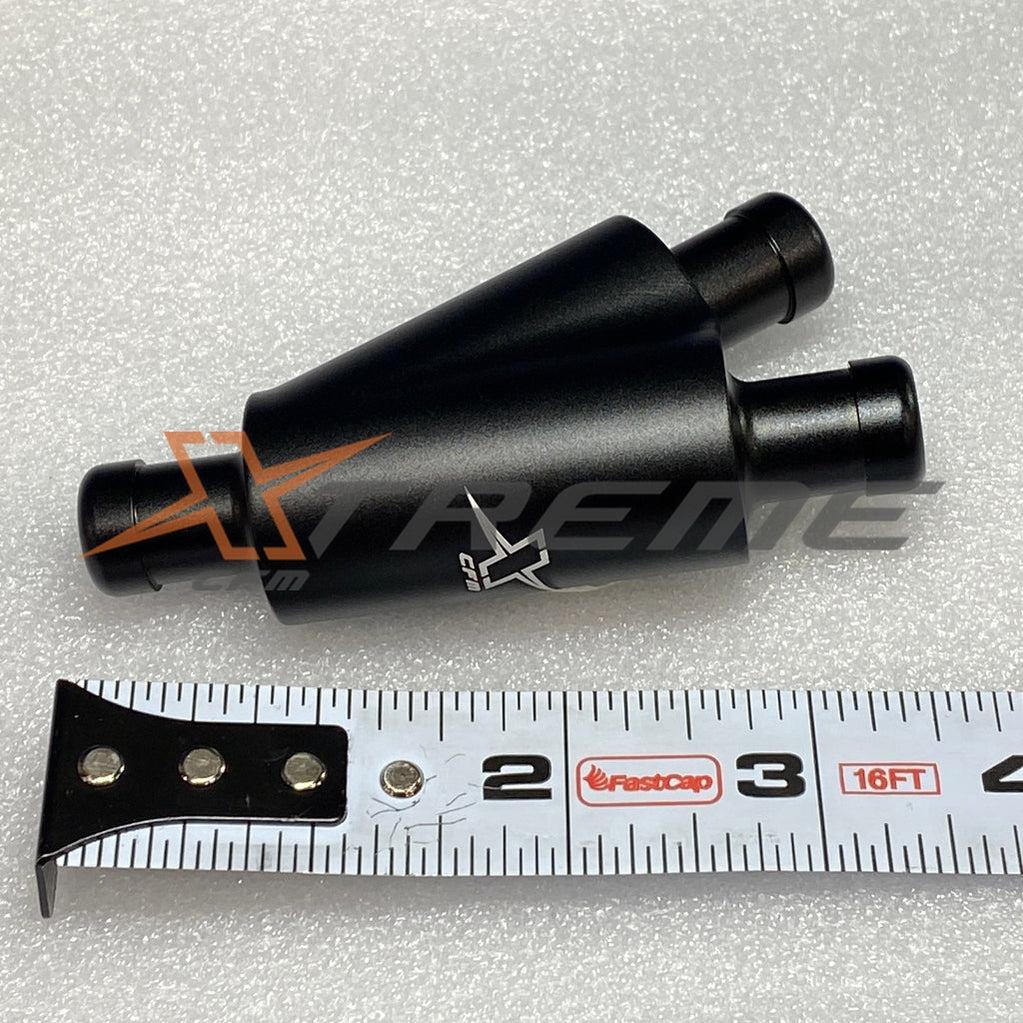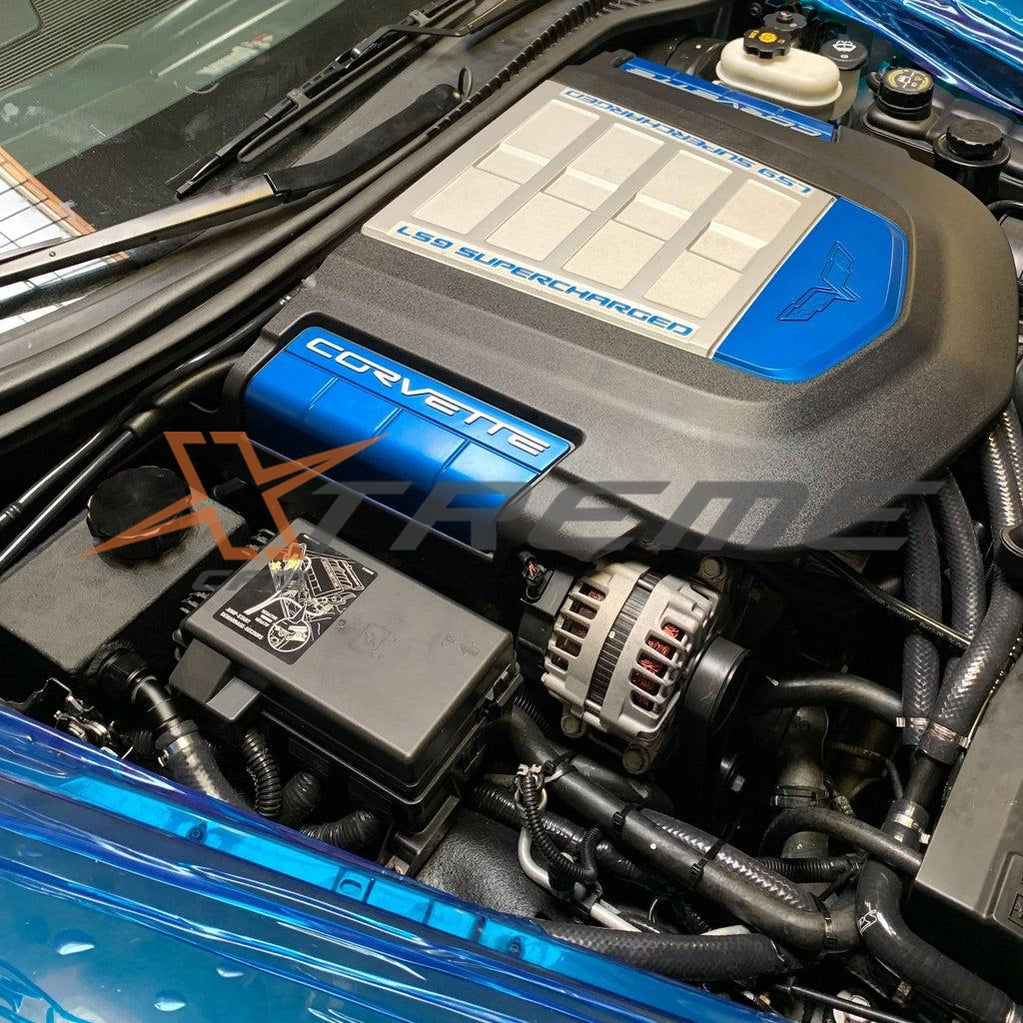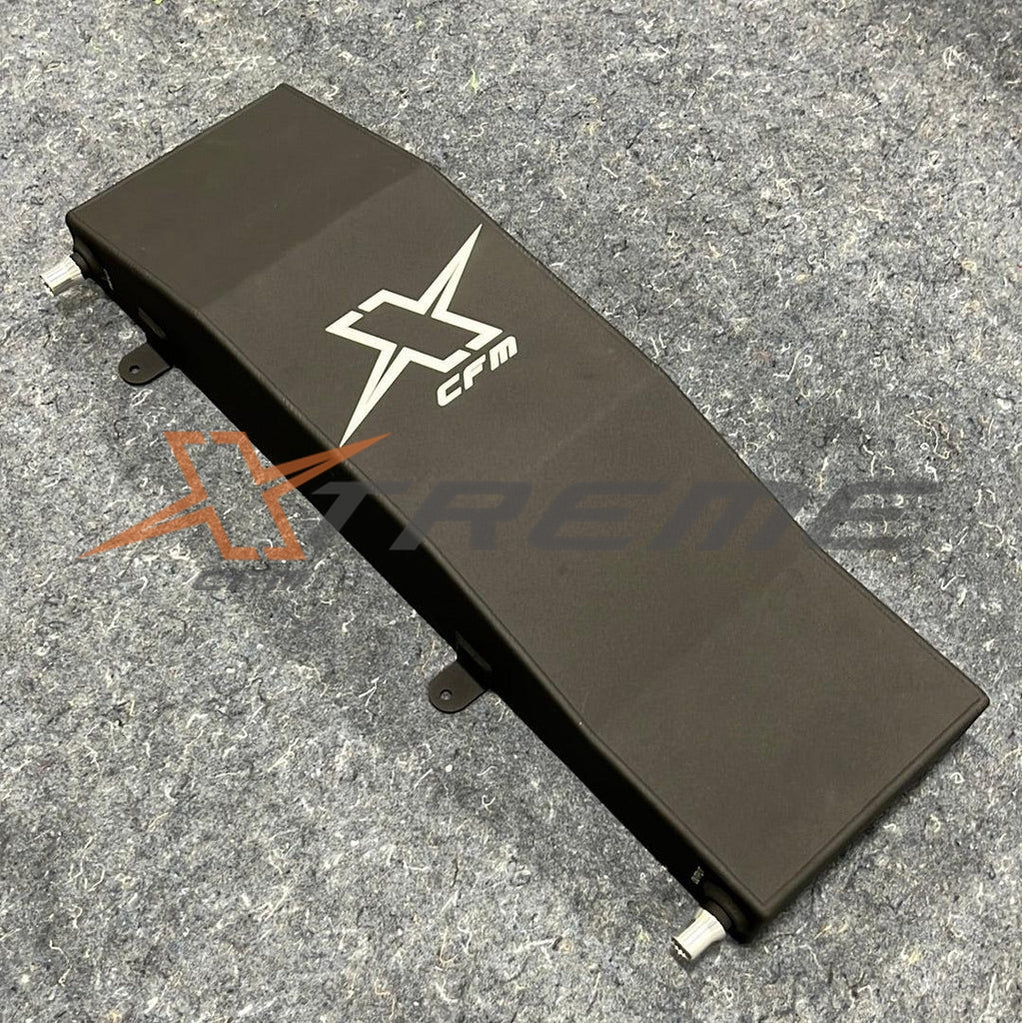
Cooling Systems - Radiators, Heat Exchangers, Bricks and Fluid
Cooling... How it All Started
Writing this blog has left me with a lot of mixed feelings. First off, how did I even get here? And not to even come off sounding like a professional at all, but just in general. I was building and tuning cars for 20+ years, and now here I am writing about cooling. First off, I am not a scientist with this at all, but what I am, is a guy who wants to learn as much as I can, so that I can teach and practice all of this as best as I can. Guess you can call that my “Legal disclaimer”.
Cooling is interesting if you think about it. It’s not just for our cars. It’s how we operate as people as well. When we get hot, our body does what it does to bring the temperature down. When the engine temps get hot, our vehicles do what they do to bring our temperature down. Sounds easy right? I mean, it sounds way easy to me. Obviously my body knows what to do, so why doesn’t my car know what to do? Well, all of this so-called cooling, is actually a matter of learning the science behind it all. We want to remove the heat from the source that is hot. Our bodies use sweat, our cars use water. We are basically using a carrier in between to do the heavy lifting.
Know what's really cool about most stock, un-touched vehicles? Their ability to stay cool in any climate possible. Arizona? Sure, we got this. And why is that? That’s because most manufacturers realize that the balance of air flow and surface area are key to removing heat. So let’s think about this. Our radiators, from the factory, can be thin, skinny, however you feel like describing them. They easily let air flow through them, they require little to no air movement to work, they seem like the perfect piece. Actually, they kind of are if you ask me. They found the best balance of sitting in traffic, driving around with the AC on, kinda balance you need. Sounds amazing if you ask me. Where do I sign up? Oh that’s right, my car came like that. But in walks me, the guy who just wants more. I want more demand, and I seem to expect my once-so-ever-amazing cooling system to understand and meet my demands. How could I ever be so selfish to think about adding power, but not even considering the heat.
Removal of Heat
Obviously we know that air moves past a row of fins in a core, while water moves in another direction as well. Not sure of that yet either? Let’s break it down. A core, radiation or heat exchanger, has two directions of flow happening. The first is your main, you have air that hits the front and passes from front to back. Hey, we figured it all out, we are a genius. HAHA, yeah we have some humor I know. Then we have the fluid aspect. This time it’s coming from the sides. So we have this water that seems to be hot due to whatever is affecting it, being the engine or blower, and we have this air movement moving between. The water has its own channels in which it flows through, and in between each of those, is a row of fins that allows the air to move between. What we are trying to achieve is moving air to remove the heat within the fins caused by the water, in hopes that we can regulate the water temps. When I actually write all this out, it seems really simple honestly. So I guess this is where the hard part comes in...
You Want More Power?
More power equals more heat in every area of the engine. You need something to remove that heat. Now what do you do? Drive faster? Sure, if you like getting your car impounded, but we can save that for youtube videos. Airflow, it’s right in front of you the whole time, actually, literally in front of you. Do we go bigger on the radiator? The heat exchanger with a blower? How do we even figure all of this out? Well, every time I’ve called my friends at any company that specializes in cooling, they say this…… Math. Ugh, thanks for that. The short answer, surface area. The core size, its ability to flow or remove heat from water, all of these things. Well great, where do I start then? Same boat most people are in I guess. Everyone asks the same things, what makes your core better for this job then the others?
So I did what I always do, become obsessed and keep thinking about stuff on a daily basis instead of going about my normal life. I have known about so many core design companies for a long time. If you've been doing this for 20 plus years like I have, you are bound to have heard of a few of them. So you develop the relationships needed, you try products over time, and you see what works for you or not. It’s really that simple. Where is the hard part? Getting past that 80% of what I like to call, just good enough. How in the heck do you do that? I thought a radiator core was just a radiator core. Doesn’t water just move through it and air as well? Again, simple basic thinking gets us here. We see dozens of ads for every drop in item to replace the item we think is broken, and we instantly think, they obviously did their homework, it's what they specialize in right? Nothing is worse than being wrong, and being wrong when you had to sell your customer on that part as well. Now it is all on you from here. You are the builder, you are the guy that said this is the best out there. Honestly, you were just going off of what you read, or maybe who you had an account with. Surely this blog will get me in trouble for sure, but hey, honesty is why we are here.
You start to dig. How does airflow work? How does heat removal work? You look at how factory cars are made, you look at upgrades made for factory cars. Your mind just spins all over. Ok, I need to think about the things that make sense here. My stock radiator or heat exchanger, it's thin. But why? Oh, it is a thing because air flows through it easier at low speeds. Yes, low speed like traffic. Yes, I want my blower and engine to run cooler because I drive my car daily. The one I found online is really thick. Hmmmm, is air going to move through at the same rate? I mean, they said because the core is bigger, it removes more heat, but if air can not get through at the same rate, will we remove more heat? And, is my AC and the radiator being affected more now due to less movement as well behind it? All really good questions and when you take the data, you find that most normal cars run hotter because of said changes. Wait a minute, why am I hotter? This is aftermarket, it is supposed to work better!
The reality is yes and no. It’s aftermarket, so the need to sell is there, and sometimes without enough thought and trial to warrant it being there. But if you can test, and test, and test. Then you can come up with a product or core, that is fittings to making massive improvements! Yes, there is a balance! Sometimes I have been shocked when I compare two companies, one having a giant thick core and one having a much skinnier core. The outcome is usually the smaller core does better. Why? Easy air movement, good surface area, and just a good understanding of it all.
Surface Area
Surface area is the amount of real estate the core takes up. You either have a core that is tiny in front of you, or a core you can see a mile away at a car meet. Maybe it even has a logo painted on the core so you really know who made it. My point is, where is it sitting? Is half of it behind a bumper support? Does the core think that it takes you driving 200 MPH to move air through it? Can you even run the AC now to cool down the car seat you have in the back of your 900 wheel sedan. Come on, lot’s of us do this. Kids love fast cars. So remember you have a stack of devices that require your attention. You have your radiator. Can’t live without that guy, no way. Then there is an AC condenser in front. Ok buddy, try and not take up all the room here. Then you got a blower heat exchanger, hey who invited you to this party? Oh, did you say power steering cooler? Well come on then. Where do you think all this air is going? As it goes from one place to another, by the time it hits whatever is left behind it all, you are left with just that. So you have to really start thinking about what you buy and why at this point. This really does make more of a difference than you think.
Heat Removal
You hear, faster water is better, slower water is better. You hear it all. It really comes down to core design. And once again, you are left with zero data or information on the internet when you buy any one company's design. You are told nothing about the core, how it flows, does it like less or more flow, etc. So what do you do? Trust your buddies cause they all bought the same one? Trust the hype from a forum cause it looks cool? Or do you sit and think about what you really need this item to do? There are a few great companies out there who really take the time to have a good flowing core, both front air flow and water flow, so that you are getting a solid all around product. Now this Blog is not here to mention any of that, but more to inspire a lot of you to go out and put your minds to work on thinking about all of this. One of the best things I could ever teach anyone is how to test their own stuff. It’s power to the customer that holds no limits.
Core Design
This can be a sensitive one for sure. If you took two heat exchangers or radiators of the same size and spec, and put them side by side from two different places, would you be shocked at the difference? Why? Core design. In life, there is a science to almost everything. Heck there is a guy out there at some company whose whole life has been dedicated to making masking tape better than anyone who's ever made masking tape. Think about it, we take these small things for granted. But some people have spent a lifetime trying to perfect that one thing, that we know nothing about, because it is their passion to create a better product. So here we are, core design. Now we are talking about the ability to remove heat from water. Man, crazy science if you think about it. Something was hot, and now it’s not. Wild. Mind blown when we break it all down.
Water Flow
Let’s simplify this. As water moves through a core, it grabs on to heat molecules, however you want to explain it in your head. It grabs on to the heat, pulls it along as it moves to remove it, and you have in the end, heat removal. Probably the worst basic analogy ever written, but who cares, as long as you grasp the concept, I’m all about it. The core, purly defines how water moves through it. It’s really that simple. Let’s do it this way. You have a building that holds 250 people by fire code. The not so good core has 3 fire escapes and the ability to remove the people at X rate. The better core has 5 fire escapes and can get more people out faster in the event of a fire. Which core would you choose? The ability to save lives faster is a no brainer.
Yes, I have heard too much water flow is bad, etc, etc. And actually, I agree to a point. If you talked to me about an engine radiator, then yes. I have actually slowed down and changed thermostats to higher temps and allowed water and the radiator to do its job better, and have significantly better temps on a race track. Blowers and intercoolers however, nope. You want that heat removed as fast as possible. The fact that the source of heat is only just heating everything at the rate of your engine speed increasing, no way. It’s literally producing heat faster than you can control. Removing that and water flow are your main concerns. The slower you do that, the more the heat stays in the system and starts to compound itself. The only time I have personally seen too much water flow, is when customers try to run really high flowing pumps, in a system that holds such little volume, that it starts to turn the water into cream. No joke, the coolant just becomes bubbles. There is such a thing. What we have done in the past is connect a particular water pump with software, and try different speeds in a smaller system to see where it still controls cooling without killing it. Past a certain RPM, and you actually start to run hotter. So yes, in a small volume system, it is very critical you know what you are doing. But a large volume system like a trunk tank, you want as much flow as you can due to head volume on the pump and demand. All of which we will talk about at a later time.
Pump Head
Pump Head calculation. I once thought this was only about the amount of pressure in front of a water pump. Pump head is actually about everything. Length and tube diameter, how many objects are in front, you name it. It all affects everything. Pump head, it's the entire system. It’s all about how many times you change the diameter of lines, fittings, heat exchanger’s, intercooler bricks, all of it. When I first started making water tanks, I went off of what the water tank could do on its own. Then you add in the next object, and the next object, and so on. What you end up with is a number you really did not think you would end up with. Here is the good thing though, and that is if you make a tank flow really well to start, you start with a much higher chance at having an entire system flow that much better. It now becomes each piece along the way that changes your system. Being continuous with what you are doing helps in creating a water system that works.
Ask the Right People
I say this because it is true. No one gets any place without asking the right people who have taken the time to ask themselves and take down the data. If you buy a product based on the fact that they can not give you data to back it up, then you are going in blind. Granted, you won't always have every detailed piece of data, but having something you can believe in sure helps. One of my greatest commitments is that I try to give customers the tools to test their own theories. Let’s face it, if it only comes from one source, how can you trust it? If multiple independent people do their own home work, only to wind up with the same results, then you have yourself the truth. And I will be honest, there is no way even I can have constant data for each product, it would be impossible unless I sat in a dyno room all day with every car combination possible. Would it be cool? Sure, just not feasible. So I work with what I got. But I do try, I will at least say that.
Final Thoughts
If I had to sum it up, here is what I would say. If you have a small volume system, run it slower. Let the fluid move like it does, but don’t over work it. It just becomes useless and you actually run hotter. I know this, because I have sat there with my laptop and ran pumps at all speed intervals on a small system to only see a point of going backwards. It does happen. A large volume system needs a good pump. The moment we start adding long water lines, bigger heat exchangers, lids, bricks, y blocks, you name it, we need a system that can keep up. Systems like this are usually designed to remove heat as fast as possible for certain types of racing. Small volume systems are mainly designed for daily types of driving and low HP setups where high amounts of heat in the water are not apparent. The cool part of a small volume system is how well they respond to normal driving in traffic and lower speeds. So there is a place for them. My point is, pick what you want to do with the vehicle. That will ultimately decide on what you need out of the system.
- Choosing a selection results in a full page refresh.


